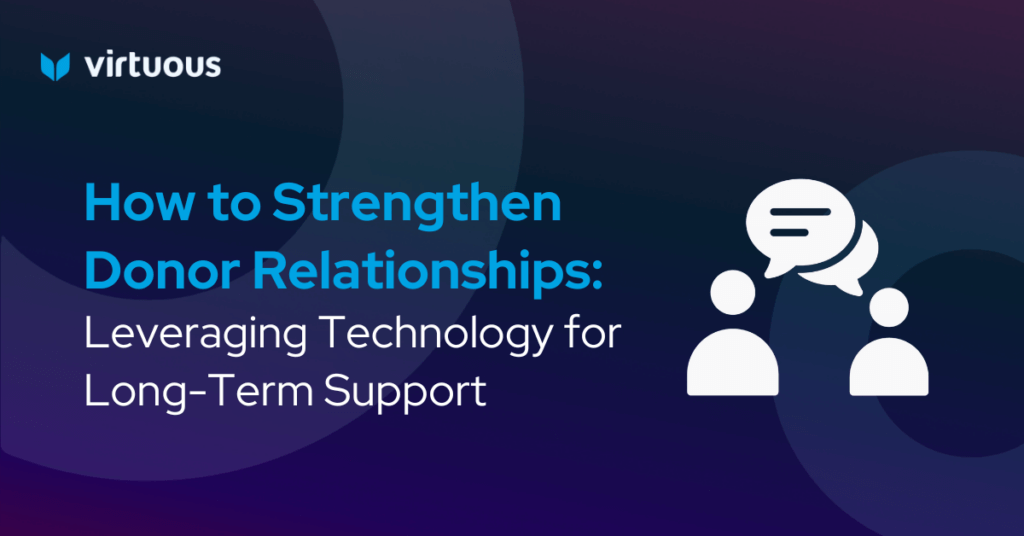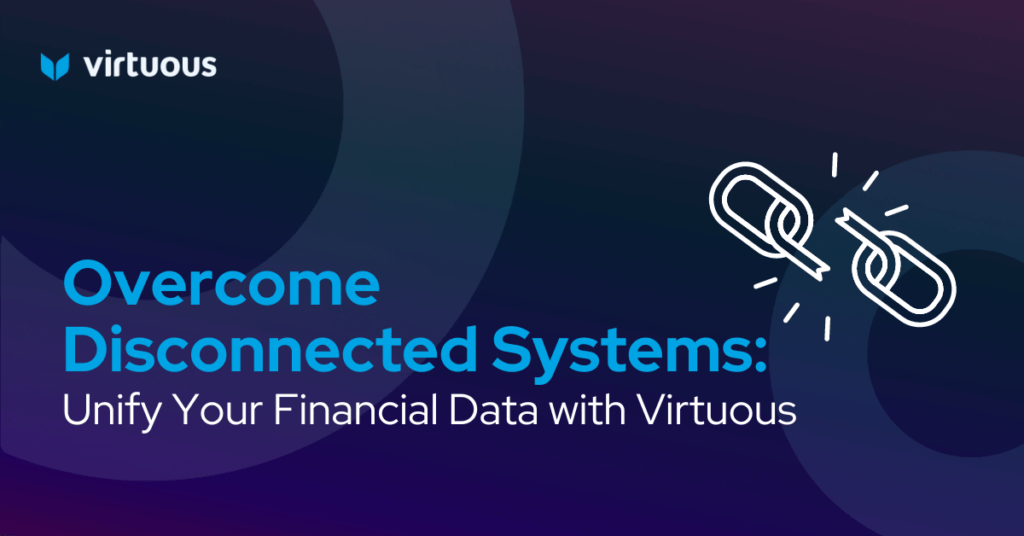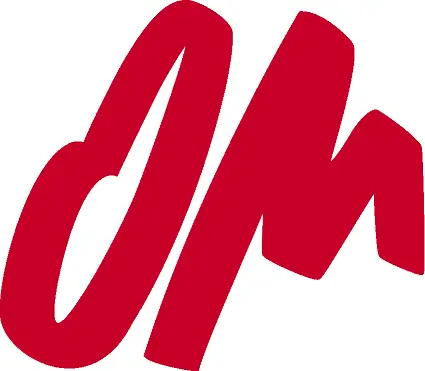After taking the time to truly understand your needs and carefully weighing your options—you finally select a new Nonprofit CRM for your organization. You’re excited to get moving, but where to start? How can you make the most of your CRM implementation project? How can you set your organization up for success?
There’s a lot to consider!
But never fear — In this article, we’ll walk through the implementation process together from start to finish. Along the way, we’ll highlight key considerations and success factors to help prepare you for your journey. Let’s get started!
1. Get a Head Start (if possible)
By investing in pre-implementation planning, you start your project with a detailed roadmap and itinerary to help make your travels smoother. The pre-implementation planning phase typically happens before the official vendor engagement begins.
In this phase, you may focus on negotiating vendor contracts, planning the project, hiring additional resources to augment your internal capabilities, performing organization readiness assessments, and preparing your organization for change.
This is also a great time to assess your data and start tidying up.
2. Invest in Project Management for Successful CRM Implementation
The project manager is akin to having an experienced and trusted tour guide on board, helping charter new territory and navigate any bumps in the road. A CRM implementation project is a significant undertaking and often a new staff experience. By investing in project management, you invest directly in your project’s success.
Why do projects fail? The most common reasons are unclear expectations, scope creep, and incomplete requirements. An experienced project manager will help your organization manage these risks.
The project manager will plan the project, define the requirements and acceptance criteria, and gain buy-in from stakeholders. They’ll document and manage the scope, establish a formal process for handling change, and monitor and control the schedule and budget throughout the course of the project.
The project manager is also highly skilled in the art of people.
Project management is not just about managing spreadsheets. The project manager plays a pivotal role in managing stakeholders, communicating project information, and resolving conflict.
3. Assemble Your Project Team
As you embark on your journey, staffing your implementation project is another key success factor. You need to make sure you have the right composition and team size to support your project. A lack of resources or inexperience may lead to project failure or delays.
A. Start by assessing the roles and responsibilities required for your project.
Typical roles include:
- Project manager
- Project sponsor(s)
- Design, data, and technical leads
- Subject-matter experts
- Testers
- Trainers
- Report developers
Depending on the project size and scope, some staff may take on multiple roles and responsibilities within the project team.
B. Consider the available internal resources who could work on the project.
Does your staff have the required capacity and expertise? What training do they need to prepare them for the project? You may find that you need to augment your team with external resources to work on the project directly or backfill for others.
4. Reimagine Your Business Processes
On your journey, you sometimes need to take the path less traveled. While old habits die hard, don’t let this stop you from getting the most out of your new nonprofit CRM.
A common pitfall in implementation projects is the desire to recreate your existing processes using the new CRM. It’s quick and easy, but it won’t help you in the long run, and certainly won’t yield the expected return. A new CRM should help transform your operations.
During business process design, your staff needs to look for opportunities to automate and centralize activities within your CRM. As a best practice, functional teams need to play a central role in the design process. Keep an eye out for potential resistance (after all, change is hard!) and address it as quickly as possible.
Think critically about your requirements, and when in doubt, return to the “why”—why do you need to do something? What are you hoping to achieve?
By questioning the status quo, you’ll better understand your true requirements for the new process and avoid just doing something because “that’s the way it’s always been done.”
5. Prepare Your Data for CRM Conversion
A successful data migration or conversion is like a well-packed bag for your trip. Depending on the implementation project scope, you might be able to transform your data as part of the conversion process, or you may be limited to a straightforward migration (where data is simply moved from the source system to the new CRM).
Data conversion typically takes a greater investment in time and resources, but has the ability to make a larger impact.
Either way, you need to prepare your data for the move. This is a great opportunity to purge — if no one knows what the data means, you probably don’t need to take it with you.
Be flexible with your strategy. You can clean source data in your existing CRM, transform the data through a conversion script, and plan to run post-scripts or manually clean after the data is moved.
It’s important to prioritize data cleanup work, as it’s easy to get hyper-focused on perfection and lose sight of time constraints. Be realistic about what you can accomplish and continue to measure the business value vs. the effort size.
6. Test, Test, Test!
Before you walk out the door, you need to validate that you’re truly ready to go (keys, wallet, phone – you get the idea). You don’t want to forget anything essential that could have been caught with a little extra forethought. Timely, methodical testing is a key success factor in your CRM implementation.
When setting your project schedule, build in opportunities to iterate. You need to validate that your data has correctly moved to the new CRM and that your business processes satisfy your requirements.
For your data, you always need to have at least one test run before go-live. When you’re converting data, you’ll often have multiple test runs. For your business processes, we recommend end-to-end testing vs. fragmented use cases, as it’ll more closely replicate real life and allow you to better detect and correct issues prior to go-live.
As you get closer to launch, you’ll want to control changes coming out of testing and focus on go-live critical issues to manage risk.
7. Train Your End Users
You need to make sure that you and your fellow travelers (i.e. your team) have the right knowledge and expertise to thrive at your destination. End-user training is essential to a successful implementation.
More and more vendors provide free training and certifications to users as part of their solution. These courses tend to be self-guided. You may want to additionally consider combining passive learning with more active methods in a hybrid program.
An example of this would be in-person or remote classes led by an instructor. Building opportunities for users to practice what they learn through guided exercises as part of the training session is an excellent way to facilitate learning.
Be sure to use a training environment to create a safe setting for staff to “play,” without worrying about “breaking things.”
8. Write it Down
There will be a lot to remember as your trip progresses. You’ll want to make sure you take notes along the way.
At JCA, we recommend an iterative approach to documentation. If you document as you go, you can be more efficient and reduce the risk of documentation falling through the cracks of a busy project.
To start, consider your documentation needs holistically. What types of documentation are provided by the vendor? What do you need to develop on your own? Think about how you can build documentation into the implementation process to help manage time and resources.
For example, training documentation can form the basis of user manuals, or data dictionaries can be built from conversion documentation. Writing it down will help your future self be more efficient!
9. Optimize Reporting
When you travel abroad, you might need to learn a new language or find a way to translate. Similarly, your new CRM will speak a different language due to its unique data model. This change will require you to rethink your current reports.
As a first step, audit your existing reporting needs and perform a gap analysis against the new functionality (e.g., built-in reporting tools, canned reports, data views, queries). Ideally, your new CRM will provide increased efficiencies and allow you to build many of your reporting needs directly into the system.
As you review, you may also learn that some reports will no longer be needed in the new system. If you cannot meet the need within the solution, you’ll likely need to develop custom reports as part of the scope of the implementation project.
10. Nurture Your Data Ecosystem
Not only do you need to plan your travel from point A to B, but you also need to consider how to get around once you arrive at your destination. Similarly, your CRM can’t function alone as an island — you need bridges between your organization’s data stores to create a 360-degree view of your supporters.
In most cases, your CRM should provide a centralized sense of truth for your supporters. A key area to prioritize is your financial posting process. How will gifts flow to the general ledger? Is there an opportunity to automate?
You don’t have to tackle everything at once. However, at a minimum, you should understand the big picture of your entire ecosystem and have a strategic vision of how it’ll work together as a whole.
11. Plan for a Successful Go-Live
When you fly, you may plan for the downtime by downloading your favorite podcasts, sending a couple of last texts, and taking one final look at your email before switching to airplane mode. Similarly, a successful go-live requires careful planning and communication prior to take-off in order to manage disruptions to business operations.
Staff will need to create workarounds for their processes during the blackout period when they will not have access to the old or new CRM. For example, you might log gifts in Excel to import or enter after go-live.
Be sure to communicate early and often about the plan for cutover and go-live and make no assumptions.
After go-live, consider how you can support users in making the transition. For example, you may devote a dedicated team to answering questions and responding to issues related to the CRM launch for the first few days.
12. Allow Time to Settle
Finally, build in time for stabilization after go-live, to adjust for “jet lag.” It may be tempting to consider the project done at launch and to quickly move your attention to the next organizational priority.
However, realistically, there will likely be a few hiccups, unexpected snags, and potentially some planned post-project work to do before you’re truly finished. You can prepare by devoting adequate time and resources post-go-live for stabilization.
At its best, a CRM implementation is professionally rewarding, can bring your team closer together, and most importantly, transform the way you as an organization work. By focusing on the above success factors, you can embark on your CRM adventure with confidence and ultimately make the most of your CRM investment.
Next Steps
How do you find the best nonprofit CRM for you? Check out our guide for objectively comparing and selecting new nonprofit software. Then, when you’re ready, schedule a demo with Virtuous to get started!
About the Author
Liz Murray, PMP, joined JCA as a Consultant in March 2017. Liz has worked with numerous nonprofits, predominately in Higher Education and Healthcare, on enterprise system implementation, system selection, and business process improvement projects. Clients include the University of Arizona Foundation, Texas Children’s Hospital, and Providence College.





